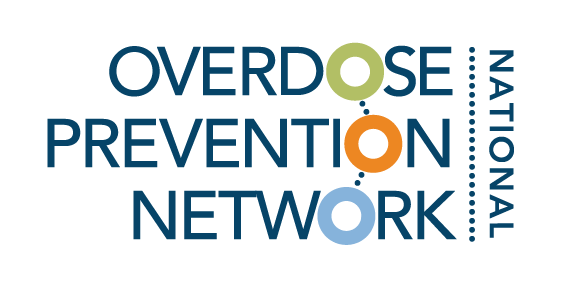
Resource Library
Toolkits, guides, and other resources vetted by experts in overdose prevention.
Filter by category and tags, or search by keyword (ex. COVID-19, harm reduction).
ODMap
The California Emergency Medical Services Authority (CEMSA) has implemented ODMap statewide. Since 2020, CEMSA has logged over 145,000 non-fatal overdoses and over 12,000 fatal overdoses into ODMap, which provides a heavy source of data to go off of for future reference. A reminder that this is just one agency logging overdoses and does not reflect the entire state and other agencies who are not part of CEMSA and are continually logging overdoses onto ODMap every day. There is still a push for full statewide ODMap implementation with other agencies, but this is a step in the right direction.
CHRI Point in Time Survey Results
California Harm Reduction Initiative (CHRI), funded by the California Department of Public Health and led by National Harm Reduction Coalition includes a Point In Time (PIT) survey as a part of its evaluation. All 37 syringe services program grantees collect information from participants twice a year, and this highlights a lot of important things about participants experiences with overdose, drug use and access to services.
Tribal Opioid Settlement Webpage
Nationwide settlements have been reached to resolve all opioids litigation brought by states and local political subdivisions against the three largest pharmaceutical distributors. These settlements will provide substantial funds to states and subdivisions for abatement of the opioid epidemic across the country, and will impose transformative changes in the way the settling defendants conduct their business. This web page outlines the various opioid settlements for the tribal communities in the U.S., and offers legal documents outlining the risks and opportunities that these funds present.
DanceSafe
DanceSafe is a nonprofit that provides drug checking and is founded on social justice principles. They are known for testing users drugs at festivals and events and have additional programs ranging from drug education to consent deep-dives to political advocacy to sexual health. You can visit their site to learn more about their efforts or purchase drug testing products via their shop.
BTNX, Inc.
BTNX Inc. is a biotechnology company that specializes in rapid, point-of-care diagnostics. BTNX is the manufacturer of fentanyl testing strips which can be purchased directly from this manufacturer.
Santa Maria Joint Union High School District Naloxone Policy
Santa Barbara Opioid Safety Coalition worked with Santa Maria Joint Union High School District to recently amend a local school policy surrounding medication administration to additionally include naloxone into the policy. This policy allows for the superintendent or designee, or any trained district staff member, to administer naloxone during an opioid overdose. This is an excellent showcase on how COPN coalitions are implementing policy change at the local level.
CA Syringe Services Programs & Harm Reduction
California Department of Public Health has a Harm Reduction and Syringe Access Division, focused on serving people who inject drugs. California law supports public health efforts to expand access to sterile syringes through both syringe exchange programs (SEPs, also known as syringe services programs) and nonprescription syringe sale in pharmacies.
CA Statewide Standing Order for Naloxone
CDPH has issued a statewide standing order to help reduce morbidity and mortality associated with opioid overdose by facilitating the distribution and administration of Naloxone Hydrochloride (Naloxone) in California.
Increasingly Powerful Opioid Antagonists Are Not Necessary
In the U.S., drug overdose deaths have increased substantially during the COVID-19 pandemic. Synthetic opioids are implicated as the primary drivers of this increase. Naloxone is recommended for use and distribution by health professionals and laypersons to address this crisis. Given the relative potency of many synthetic opioids, it has been theorized that higher doses of naloxone may be required to effectively reverse overdoses. This study tests that theory and provides recommendations related to naloxone prescriptions.
Principles for the use of Funds from the Opioid Litigation
Developed by a coalition of organizations across the spectrum of the substance use field including physicians, addiction medicine specialists, recovery, treatment, and harm reduction, this webpage offers planning and process level guidance for state and local policymakers to use when planning for opioid settlement funds.
National Opioid Settlement Webpage
Nationwide settlements have been reached to resolve all opioids litigation brought by states and local political subdivisions against the three largest pharmaceutical distributors. These settlements will provide substantial funds to states and subdivisions for abatement of the opioid epidemic across the country, and will impose transformative changes in the way the settling defendants conduct their business. This web page outlines the various opioid settlements by state, and offers legal documents outlining the risks and opportunities that these funds present.
Strategies for Effectively Allocating Opioid Settlement Funds
Opioid settlements with pharmaceutical companies have already occurred, and there are more to come. Settlement funds could save lives and mitigate lifelong harms from opioid misuse if they are allocated to the most effective interventions. This webpage offers effective strategies for ensuring states get it right in terms of the distribution and effective use of these funds.
The Importance of Forming Alliances & Finding Common Ground
This video explains the importance of forming alliances on both a local and national level, and how this can contribute to better services and outcomes long-term.
Vital Signs: Drug Overdose Deaths, 25 States and the District of Columbia, 2019–2020
Drug overdose deaths increased approximately 30% from 2019 to 2020 in the United States. Examining rates by demographic and social determinants of health characteristics can identify disproportionately affected populations and inform strategies to reduce drug overdose deaths.
Legality of Dispensing Naloxone to Minors in California
There are many reasons a person under the age of 18 may wish to obtain the life-saving overdose reversal medication naloxone or another opioid antagonist. In 2020, over 15 percent (874 out of 5,502) overdose deaths in California occurred in individuals under the age of 25. Additionally, individuals under the age of 18 may be able to intervene in the overdose of an adult, such as a friend or family member. This fact sheet examines the legality of dispensing naloxone to minors in California.
Addiction Medicine Toolkit
This toolkit from the CDC is designed to provide an introductory overview of addiction medicine for clinicians and provide strategies that can be implemented in your practice.
Rescue Agency
There is no one-size-fits-all strategy to changing health behaviors. We approach every challenge through a data-driven lens, bringing together topic research and audience insights to develop tailored behavior change campaigns.
Isn't Two Enough?
Racial disparities in arrest rates for drugs are a well-documented (and lived) reality. For decades, drug policy has contributed to skyrocketing incarceration rates among minority populations. This video looks at the reasons behind these disparities, and what must be done to achieve improvements in health and racial equity.
Cannabis Prevention - Big Deal
This video describes the dangers of using "new marijuana" or “wax,” an altered version of cannabis that is mixed with other, more lethal substances. It shows how this more intense version of THC can negatively impact youth and their brain development.














